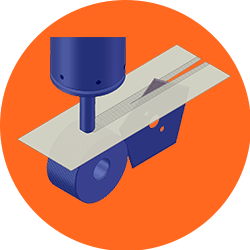Our ultrasonic technology
The ultrasonic technology by Decoup+
From the lauching of our first range of ultrasonic cutting and welding devices in the 70’s, we have gained not only a strong technical expertise, but mainly in process itself.
Ultrasonic technology offers various advantages, especially in sun protection, final make-up, ribbons, technical textile or packaging industries. This technology performs clean and soft edges, without fraying, overthickness, burning or yellowing, but also strong and regular weldings without any additional material such as glue, staples, rivet, etc. Ultrasonic can be used on any synthetic fabrics (with minimum synthetic fiber content), technical textiles, nonwovens, thermoplastics… in a word, on any “thermofusible product” (which melts under heat effect). Quick and clean, ultrasonic technology allows a direct use of the final product.
We propose various technologies adapted to products and customers needs
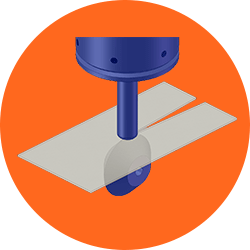
Direct cutting
This ultrasonic technology performs cutting and sealing in one single pass, for clean and strong edges, without fraying.
Devices type:
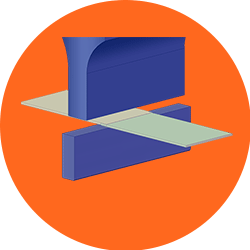
Press
This technology performs impulse cutting or welding on materials up to 60 mm width. Depending on the device used, this technology can be used also for spot welding.
Devices type:
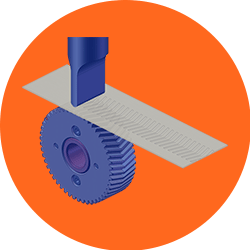
Continuous welding
This technology performs ultrasonic welded track in continuous, to splice 2 webs of product. These splices are resistant and can be used directly on final products.
Devices type:
Contact us for trials right now!
How does ultrasounds work?
This is a brieve description of Decoup+’s technology, used for both ultrasonic cutting and ultrasonic welding
Our technology is based on the piezoelectric principle, to transform an electrical signal in mechanical vibration. 4 elements are needed:
- An ultrasonic generator to control and to provide energy to the ultrasonic head.
- A mechanical unit composed with a Converter, a Booster and a Sonotrode, also called Horn, to perform the cutting sealing operations.
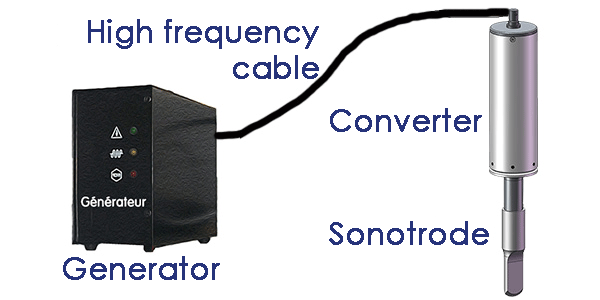
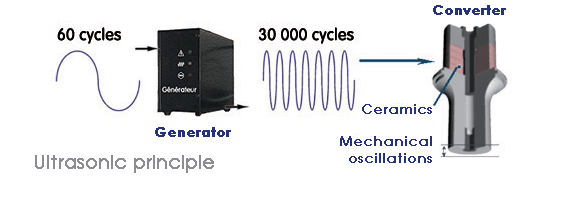
01 The ultrasonic generator converts the power supply (100-250 Volts, 50-60 Hz) into a 20 to 30 kHz, 800-1000 Volts electrical signal. This signal is applied to piezo-electrical ceramics (included in the converter) that will convert this signal into mechanical oscillations.
02 These oscillations will be amplified by the booster and converter, thus creating a hammer. The converter converts electricity into high frequency mechanical vibration. The active elements are usually piezoelectrics ceramics. The booster (optional) serves as an amplitude transformer. Amplitude magnification or reduction is achieved by certain design features or the geometrical shape of the booster.
03 The sonotrode, or horn, is the active part of the ultrasonic unit. It is in contact with the fabric and acts as a hammer against the counter-tool. This system will enable to melt the fibers within the fabric by mechanical action only (hammering), enabling to obtain a very clean and flexible melting without any burning or color change. The sonotrode and counter-tool design will be adapted to the operation to be performed.

